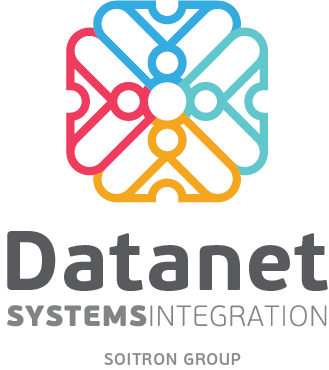
Next Generation Firewall-type solutions (NGFW) record a steady increase in the level of adoption, although the concept is still relatively new, being “officially” launched only in the past decade.
The accelerated adoption pace of next-generation firewalls – confirmed by several market studies* – is supported by several cumulated factors. In simple terms, we are talking, on the one hand, of a multiplication and increase in the level of complexity of cyber threats faced at present by the enterprise environment, and on the other hand – of the fact that information infrastructures, applications and services have evolved steadily, generating an inherent increase in the end users’ requirements for the application availability, data integrity and service agility and flexibility.
In this context, in which the focus is increasingly on the proactive approach on security issues, the methods of protection of the IT infrastructures based on classic firewalls quickly demonstrates its limits. According to specialists, the main limitations of traditional firewalls compared to the new NGFW solutions are that:
- they cannot perform a detailed inspection of data packets circulating in the network, in order perform an in-depth analysis of the traffic;
- hey cannot monitor and control how the applications communicate with each other within the network;
- they cannot detect, report and/or automatically correct the abnormal behaviour of applications based on defined sets of rules, profiles and policies;
- they do not offer a wide visibility of the whole IT infrastructure, preventing the rapid detection of potentially critical areas and/or threats.
Next-generation firewalls provide viable answers to all these problems, integrating multiple security technologies in a unitary manner (Prevension Intrusion Systems, Advanced Malware Protection, Network-Address Translation, Protocol Stateful Inspection etc.) and focusing on the identification, monitoring and control – through various technologies and methods – applications that run on the network.
Thus the change in the approach brought by NGFW provides not only a significant increase in the level of security, but also ensures a tool that significantly improves the efficiency of the business processes, prioritizing critical applications and reducing the risk of wasting resources. In parallel, the management effort of the multiple functionalities on the security is greatly simplified by operating a single platform, which eliminates the problems generated by the management of multiple equipment and/or solutions, contributing to the reduction of the operational costs and increasing the rate of response to requests and of the response to threats – of the IT department.
Thus, by unifying various solutions and security levels into a single equipment a simplification of the extensive and complex architectures is provided, and a reduction in the effort of managing security solutions, the threat-centric integrated approach enabling the rapid detection and blocking of advanced multi-vector threats.
The NGFW solutions offer is varied, but we cannot yet speak of its standardization, the type and number of functionalities offered varying depending on the vendor. Cisco, one of the leading players in the NGFW solutions, has developed a hierarchy of basic requirements to which such a solution must provide answers:
- to be able to carry out a detailed analysis of the network traffic, allowing for the identification up to the level of the user, device, location of access, applications used, websites visited, open ports, etc. .;
- to provide support in integrating mobile access in the network, in a secure manner without losing control and visibility;
- to provide a proactive approach to security threats, with minimal human intervention;
- not to alter performance when running multiple security services modules;
- to provide wide visibility and thorough control over the applications and data packets run by them;
- to enable the definition, correlation and simplified management of multiple security rules and policies at the level of the user, network, application and/or device;
- to provide a high level of security in accessing cloud services;
- to be scalable and flexible, so it can respond rapidly to the evolutions and development needs of the organizations;
- to benefit from extensive support services from vendors and their ecosystems of partners, which should facilitate and support the migration to next-generation solutions.
The large coverage area, the large number of capabilities, the specific requirements in the integration area, etc. are such that, in the process of identification of a NGFW solution, resorting to a partner with real experienced in the field is a real necessity. The implementation and development of next-generation firewalls require specialists with robust skills, proven in practice and who must be able to offer a guarantee of quality and availability of services that can be provided by a NGFW solution.
* Note:
According to Research & Markets, the annual NGFW market growth rate is 12.1% in the 2014-2019 period.
The Gartner analysis company predicts that by the end of 2018, the penetration rate of this type of solutions will exceed 85%.
According to NSS Labs estimates, the total NGFW market value at the end of 2013 was 2.87 billion dollars, and for 2018 the achievement of $ 5.8 billion is expected.
For more information please contact us at marketing@datanets.ro.
 Why does Hybrid Cloud gain market share?
Why does Hybrid Cloud gain market share?
